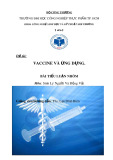
RESEARC H Open Access
Statin-induced apoptosis via the suppression of
ERK1/2 and Akt activation by inhibition of the
geranylgeranyl-pyrophosphate biosynthesis in
glioblastoma
Masashi Yanae
1,2
, Masanobu Tsubaki
1
, Takao Satou
3
, Tatsuki Itoh
3
, Motohiro Imano
4
, Yuzuru Yamazoe
5
and
Shozo Nishida
1*
Abstract
Background: Statins are inhibitors of 3-hydroxy-3-methylglutaryl-coenzyme A reductase, the rate-limiting enzyme
in cholesterol synthesis. The inhibition of this key enzyme in the mevalonate pathway leads to suppression of cell
proliferation and induction of apoptosis. However, the molecular mechanism of apoptosis induction by statins is
not well understood in glioblastoma. In the present study, we attempted to elucidate the mechanism by which
statins induce apoptosis in C6 glioma cells.
Methods: The cytotoxicity of statins toward the C6 glioma cells were evaluated using a cell viability assay. The
enzyme activity of caspase-3 was determined using activity assay kits. The effects of statins on signal transduction
molecules were determined by western blot analyses.
Results: We found that statins inhibited cell proliferation and induced apoptosis in these cells. We also observed
an increase in caspase-3 activity. The apoptosis induced by statins was not inhibited by the addition of farnesyl
pyrophosphate, squalene, ubiquinone, and isopentenyladenine, but by geranylgeranyl-pyrophosphate (GGPP).
Furthermore, statins decreased the levels of phosphorylated extracellular signal-regulated kinase 1/2 (ERK1/2) and
Akt.
Conclusions: These results suggest that statins induce apoptosis when GGPP biosynthesis is inhibited and
consequently decreases the level of phosphorylated ERK1/2 and Akt. The results of this study also indicate that
statins could be used as anticancer agents in glioblastoma.
Keywords: statins, C6 glioma, ERK, Akt
Background
Glioblastoma is the most common type of malignant
brain tumor and its prognosis is very poor. Surgical
resection and chemotherapy are common treatments
[1]. Despite recent advances in the understanding of the
molecular mechanism of tumorigenesis, the outcome of
malignant glioma remains poor [2]. Thus, it is impera-
tive that new effective forms of therapy are developed
for its treatment.
Statins are cholesterol-lowering agents that inhibit 3-
hydroxy-3-methylglutaryl-coenzyme A (HMG-CoA)
reductase, which catalyzes the conversion of HMG-CoA
into mevalonate. Mevalonate is converted into farnesyl
pyrophosphate (FPP) or geranylgeranyl pyrophosphate
(GGPP) that can be anchored onto intracellular proteins
through prenylation, thereby ensuring the relocalization
of the target proteins in the cell membranes [3-5]. Inhi-
bition of HMG-CoA reductase results in alteration of
the prenylation of small G proteins such as Ras, which
regulates cell growth and survival via the downstream
signaling pathways [3-5]. Accordingly, inhibition of
HMG-CoA reductase by statins was found to trigger
* Correspondence: nishida@phar.kindai.ac.jp
1
Division of Pharmacotherapy, Kinki University School of Pharmacy, Kowakae,
Higashi-Osaka 577-8502, Japan
Full list of author information is available at the end of the article
Yanae et al.Journal of Experimental & Clinical Cancer Research 2011, 30:74
http://www.jeccr.com/content/30/1/74
© 2011 Yanae et al; licensee BioMed Central Ltd. This is an Open Access article distributed under the terms of the Creative Commons
Attribution License (http://creativecommons.org/licenses/by/2.0), which permits unrestricted use, distribution, and reproduction in
any medium, provided the original work is properly cited.






























